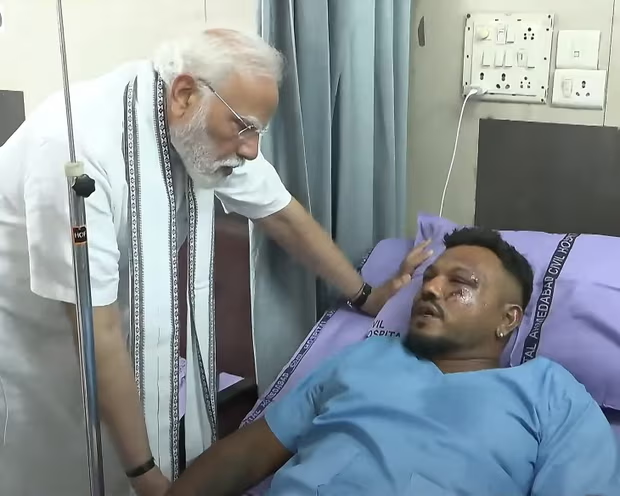Nobody expected a survivor. On Thursday, Air India Flight 171 crashed shortly after takeoff from Ahmedabad, India, killing 241 of the 242 people on board, plus dozens more on the ground. The wreckage was scorched. The fuselage broke in two. Officials called it “unsurvivable.”
Yet somehow, one man walked away.
A single passenger—Ramesh Vishwashkumar—survived the crash. No one can fully explain how. But aviation experts say that while luck plays a role, there are steps you can take to seriously improve your odds if disaster strikes.
Let’s break down what happened, what the experts are saying, and what you can do next time you board a plane.

What We Know About the Crash
Flight 171 took off from Ahmedabad, headed to Mumbai. Barely 30 seconds into the flight, it veered off-course, stalled, and slammed into a dense urban area. Fires broke out instantly. Emergency crews called it the worst Indian aviation tragedy in over a decade.
Somehow, in the middle of this chaos, seat 11A held the only survivor.
Seat 11A: The “Miracle” Seat?
Vishwashkumar’s seat—11A—isn’t traditionally seen as the “safest” place on a plane. It’s a window seat, positioned near the wing and the emergency exit.
Here’s what experts think worked in his favor:
- Near an emergency exit – Quicker escape route.
- Over the wing – This part of the fuselage is structurally reinforced, absorbing some crash force.
- Plane split in two near that section – That break may have opened a viable path out.
- Minimal fire spread in that area – Fire moved toward the rear first.
He wasn’t uninjured—he suffered burns and trauma—but he jumped from the opening and walked away, staggering from the wreck.
Aviation Experts Weigh In: Why He Survived
There’s no perfect answer. But experts agree on a few major factors that may have saved his life:
- Split-second decision-making
He unbuckled and reacted fast. That window of time—seconds—often makes the difference between life and death. - Luck of location
A survivable pocket existed. The aircraft’s breakup pattern happened to spare his section. No amount of planning could guarantee that. - Physical fitness and mental alertness
Witnesses say he didn’t freeze—he moved. Staying calm and acting fast is critical.
How You Can Improve Your Chances of Surviving a Plane Crash
You can’t control when or how an accident happens. But here’s what you can do to stack the odds in your favor:
- Pick the Right Seat (If You Can)
While no seat guarantees survival, studies show that seats near the rear of the plane and within five rows of an exit offer slightly better odds in evacuations. Exit-row seats have more legroom, easier access, and are structurally stronger.
- Know Where Your Nearest Exits Are
Before takeoff, count the number of rows to the closest two exits. In darkness or smoke, visual cues might be gone. Muscle memory helps.
- Don’t Ignore the Safety Briefing
You’ve heard it a million times, but when seconds count, knowing how to unlatch your seatbelt or use an oxygen mask without thinking can save your life.
- Brace for Impact
In an emergency, use the brace position:
- Feet flat
- Head down
- Hands on the back of your head or on the seat in front of you
This helps reduce injuries in a crash.
- Leave Everything Behind
When the plane stops, go. Don’t grab bags. Every second counts. People blocking aisles to get luggage slow everyone else down—and cost lives.
- Dress for Safety
Wear long pants, sleeves, and closed-toe shoes. Avoid sandals or synthetics that melt. Sturdy clothes can help protect you from burns and sharp debris.
- Follow the Crew
Cabin crew are trained for this. Follow their instructions. Don’t argue or hesitate.
The Bottom Line
The survival of one man in an otherwise total-loss crash is rare. It’s being called a miracle—and rightly so. But it’s also a moment to reflect.
Every time you fly, you’re trusting in systems, machines, and human skill. But there’s also you. What you do in the seconds that follow an impact could mean the difference between life and death.
So, fly smart. Pay attention. Plan just enough.
Because even if you can’t control fate, you can still be ready for it.


